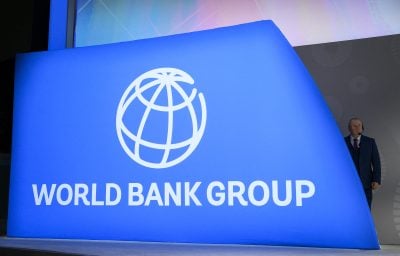This year’s Ibrahim Index on Governance, which was released at the same time as the announcement of the winner of the Ibrahim Prize for Leadership, presents a complex picture, showing some countries advancing on all development fronts but also a worrying reversal in the rule of law and human rights. Mauritius emerges as the African country with the best overall governance.
The fifth Ibrahim Index on Governance in Africa carries on the foundation work established by the earlier reports and attempts to establish a statistical measure of governance performance in all African countries. On the face of it, this looks like a well-nigh impossible project – how, for example, can you apply a standardised measure of governance in a country just emerging from civil war, or engaged in one as in the DRC, Sudan or Libya against states that have enjoyed political stability for decades, as in Botswana, Mauritius or Tanzania?
Again, the issue of just what constitutes governance springs to mind. Governance requirements in a harmonious, economically sound state with strong institutions are obviously very different from those required to stabilise states in crisis or, for that matter, the creation of a new state as in South Sudan.
Again, one has to ask if governance can actually be measured statistically. It is one of those phenomena that you recognise when you see it but virtually impossible to pin down and dissect, as it keeps changing shape and form according to the circumstances even in some of the oldest and most-established nations of the world. For example, would one classify the US-led rush to war in Iraq, based on false premises, as bad governance? Indeed how would you factor in Abu Ghraib, Guantanamo, forced renditions and the suspension of some basic freedoms that followed in the wake of the War of Terror into a similar index? Had all the above taken place in an African context, what would they have done to the ranking system in the Index?
Yet again, both good and bad governance are intangible. You do not see them in the number of new buildings or highways being constructed nor in the number of beggars on the street. Some of the worst performing countries in terms of human rights are also some of the fastest developing in terms of infrastructure and some of the cleanest roads (minus beggars and the poor) are only so because the unfortunates have been firmly shut away out of public sight. Is a country at war necessarily more unsafe than a country at peace but with a history of violent crime? Is a country inwhich there are vigorous demonstrations for rights necessarily more repressive than a country in which there is no visible public dissent?
Given these and a host of other considerations, it is hardly surprising that the Ibrahim Indexes have been controversial, especially for those nations that find themselves in the bottom half of the rankings. Some claim that the Index does not take into account the special circumstances that often fragile states find themselves in or that the researchers on whose data the Index is built either do not understand the social structures of some nations or that they simply fail to see progress that might have been made. They complain that the label of ‘poor governance’ that such indexes stick on them often leads to the loss of vital investments or even encourages internal conflict, thus fulfilling the ‘prophesy’ of the Index.
All these are valid points and the debates over the value or otherwise of the Index will continue to rage, but a careful reading of the summary report will reveal that indeed these issues have been recognised by the compilers and attempts have been made to make allowances for them. It is also very encouraging that this Index, as indeed the last two, has relied heavily on research institutions in Africa rather than foreign institutions in distant lands. Those of us who have had the opportunity to rub shoulders with Africa’s academia will attest that no one, but no one from whatever renowned institution in the world, has greater expertise on Africa than Africans themselves.
Despite all the challenges of compiling and attempting to tabulate such an amorphous phenomenon as governance, we say welcome to the Ibrahim Index. It does provide a scale on which to line up governance performances and it does place the interests of the people ahead of those in power. Its conclusions may be debatable but the spirit behind it is not. As an entrepreneur, Mo Ibrahim was never fazed by other people’s opinions of what was or was not possible; if he thought it was, he went ahead and did it. The same ethos permeates this index and from that perspective it must be regarded as a serious yardstick for our regulators and leaders to measure themselves against.
The first issue that Index sets out to clarify is the definition of ‘governance’. Governance, as defined by the Board of the Mo Ibrahim Foundation, is inclusive from the viewpoint of the citizen. The definition is intentionally broad so as to capture all aspects of what a citizen has the right to demand from his or her state.”
This is then broken down into four overarching dimensions: Safety and the Rule of Law; Participation and Human Rights; Sustainable Economic Opportunity and Human Development. The Index concedes that “since governance is not measureable directly, it is necessary to determine the most suitable proxy indicators that appropriately reflect this definition of governance”.
The inclusion of data for each of the 86 indicators for the purposes of measurement adheres to a strict code of eligibility. To quality, an indicator must provide at least two years’ worth of data between 2000 and 2010; the latest available data must not be more than three years old and new data releases should be at least every three years.
The scale of the task becomes apparent when you consider that the data comes from 23 different institutions and the raw data must then be standardised in order to be meaningfully combined. The data is then subjected to a series of complex statistical processes before the scores are calculated. The system used by the Ibrahim Index is about as perfect as any system in the world can be, although Ibrahim himself says that work is ongoing to make the system even more accurate and relevant.
Once the 86 indicators have been transformed into a common scale, each one is grouped with similar indicators to form 14 sub-categories; the sub-categories are then grouped into one of the four main categories (or pillars) and the category scores are then averaged to produce the final Ibrahim Index score for each country.
For examples, the pillar ‘Safety and Rule of Law’ contains the following sub-categories: Rule of Law; Accountability; Personal Safety and National Security.
Indicators which feed into each sub-category include, for example, judicial process, judicial independence, sanctions, transfers of power and property rights feeding into sub-category ‘Rule of Law’. This is repeated for all indicators feeding into sub-categories and so on to produce the four pillars on which rankings are based.
For each pillar, there is a continental ranking and a table showing the ‘top 10’ and ‘bottom 10’. For example, under the pillar Rule of Law, Botswana is ranked 1st while Somalia is at number 53, right at the bottom. The continental rankings for each pillar are listed in alphabetical order, not, as one might expect, in ranking order and this can be inconvenient. For example, Angola also appears at the head of all continental rankings lists and Zimbabwe at the bottom, although Angola is ranked 42nd overall and Zimbabwe 51st overall.
Want to continue reading? Subscribe today.
You've read all your free articles for this month! Subscribe now to enjoy full access to our content.
Digital Monthly
£8.00 / month
Receive full unlimited access to our articles, opinions, podcasts and more.
Digital Yearly
£70.00 / year
Our best value offer - save £26 and gain access to all of our digital content for an entire year!
 Sign in with Google
Sign in with Google 


